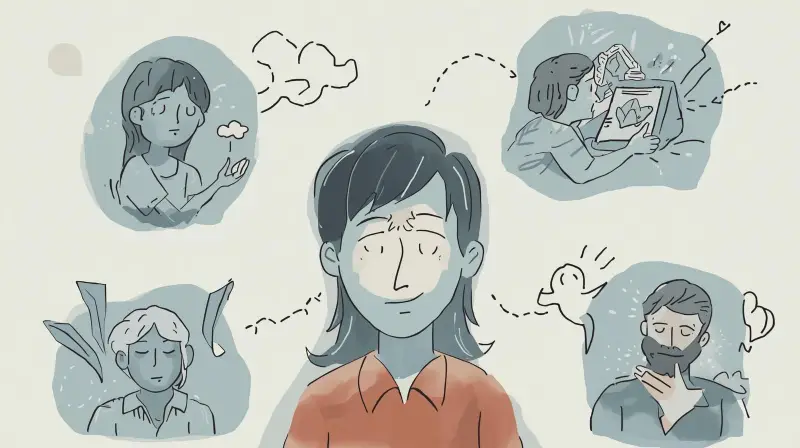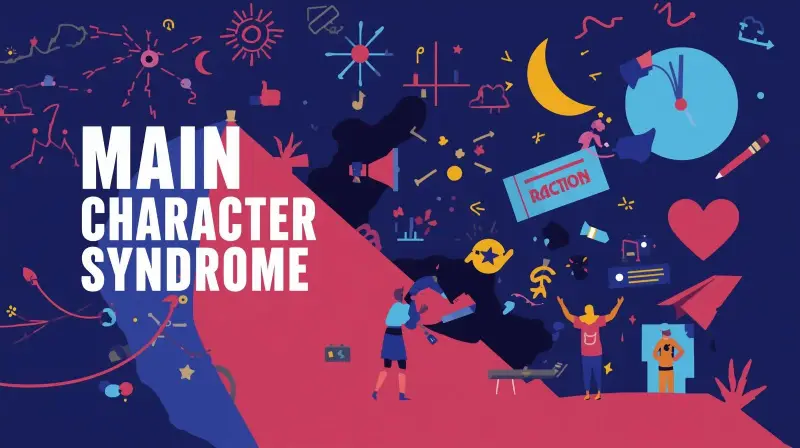Kindness is often described as a superpower, and in many ways, it truly is. It has the power to heal wounds, build communities, and bring light to even the darkest moments. But like every superpower, it comes with a cost. Constantly giving your time, energy, and empathy can slowly chip away at your emotional reserves. Most people step into caring roles with genuine intention and an open heart, yet few can sustain that level of giving for long without feeling the strain. Even when the desire to help remains, the body and mind eventually begin to protest. This is where compassion fatigue takes root, the moment when the very act of kindness that once uplifted you starts to feel unbearably heavy.
Unlike simple tiredness, compassion fatigue creeps into your emotional core. It shows up when you’ve poured out empathy for so long that you struggle to find any left for yourself. In recent years, the term has gained traction because more people than ever are finding themselves worn thin by the act of caring.
To understand why compassion fatigue is suddenly everywhere, we first need to unpack what it is, how it manifests, and what makes modern life such fertile ground for it.
What Exactly Is Compassion Fatigue?

Compassion fatigue is sometimes described as the “cost of caring.” It occurs when prolonged exposure to others’ suffering begins to take a toll on your own emotional well-being. The concept was first discussed among healthcare professionals, especially nurses and trauma workers who were on the frontlines of human pain. Over time, psychologists and researchers noticed that it wasn’t limited to those professions. Anyone who deeply engages with others’ struggles, whether as teachers, counselors, caregivers, parents, or individuals scrolling through constant online tragedies, can develop it. It differs from burnout, though the two overlap. Burnout comes from general work stress, while compassion fatigue specifically stems from emotional investment in others’ pain.
Signs often include:
- Emotional numbness or feeling detached.
- Irritability or impatience, even toward loved ones.
- A sense of helplessness or hopelessness.
- Difficulty finding joy in things that once felt meaningful.
- Physical symptoms like headaches, trouble sleeping, or constant fatigue.
When left unchecked, it can ripple into every part of life, from work and relationships to self-image and mental health.
Why Is It Becoming So Common?

If compassion fatigue has been around for decades, why does it feel like so many people are suddenly experiencing it now? The answer lies in a combination of cultural shifts, technological changes, and global crises.
The 24/7 News Cycle and Social Media
In the past, people were exposed to suffering mostly within their communities. Today, a single scroll through social media shows wars, natural disasters, humanitarian crises, and heartbreaking personal stories from across the globe. We don’t just hear about tragedy; we witness it in real time through images and videos. The human nervous system isn’t designed to absorb that much pain at once. What was once compassion for a neighbor has expanded into compassion for the entire planet, and that expansion is emotionally overwhelming.
Pandemic Aftershocks
The COVID-19 pandemic also played a major role in pushing compassion fatigue into the spotlight. Healthcare workers faced unimaginable stress. Teachers adapted to changing environments while holding space for students’ anxieties. Families juggled caring for sick relatives or grieving losses. Even friends became emotional lifelines through screens. By the time the immediate crisis eased, many were left drained in ways they hadn’t experienced before.
Rising Mental Health Awareness
Ironically, the rise of mental health conversations has also highlighted compassion fatigue. People are more open about sharing struggles, which is a positive step. But it also means those who provide support often shoulder emotional burdens without the training or boundaries that professionals use.
Workplace Expectations
Modern workplaces often romanticize “going the extra mile,” particularly in roles that involve people care, like education, healthcare, and customer service. Employees are not just expected to perform tasks but to emotionally connect, empathize, and engage with others constantly. That demand leaves little emotional reserve.
Collective Crises
Climate change anxiety, political instability, and social justice movements each create collective moments where empathy is called upon. While caring is essential for progress, the repeated exposure to global issues without clear solutions leaves many feeling powerless and fatigued.
The Psychology Behind Compassion Fatigue

Understanding compassion fatigue by looking inward at how the human brain processes empathy can help you pinpoint the triggers and locate your limits.
The Role of Mirror Neurons
Neuroscience shows that our brains have “mirror neurons” that fire both when we perform an action and when we see someone else perform it. This is why seeing someone cry can make us tear up. But constant activation of these neurons, especially in painful situations, leads to emotional overload.
The Empathy Spectrum
Psychologists describe empathy as existing on a spectrum. At one end is cognitive empathy, the ability to understand another’s perspective. At the other is emotional empathy, the ability to actually feel another’s pain. Those prone to compassion fatigue often lean heavily toward emotional empathy. They don’t just understand suffering but absorb it, which takes an extra toll on them.
The Trap of “Helper Identity”
Many who develop compassion fatigue identify strongly as helpers. Their self-worth is tied to being there for others, making it difficult to set boundaries. Over time, this identity creates pressure: if they step back, they feel guilty or selfish, which accelerates fatigue.
How It Shows Up in Different Roles

While compassion fatigue can affect anyone, its manifestation often depends on the role or environment.
Healthcare Workers
Doctors, nurses, and caregivers experience it most acutely. They deal not only with physical exhaustion but with the emotional weight of life-and-death situations. Many report feeling detached as a survival mechanism, which can later affect their personal relationships.
Teachers and Educators
Teachers are expected to educate while managing students’ emotional needs. During the pandemic, they became counselors, tech support, and surrogate parents. The pressure to care deeply for each child without adequate support systems has left many teachers burned out and compassion-fatigued.
Social Workers and Counselors
These professionals often work with trauma survivors. While trained in boundaries, they are not immune. Repeated exposure to trauma narratives can cause secondary traumatic stress, a close cousin of compassion fatigue.
Everyday Caregivers
Parents caring for chronically ill children or adults looking after aging parents often report compassion fatigue. The unrelenting cycle of giving with little reprieve drains even the most devoted caregivers.
Friends and “Unofficial Therapists”
Even outside of professional roles, people can experience compassion fatigue. In an age where sharing struggles is normalized, many become go-to confidants for friends or colleagues. Without knowing it, they absorb secondhand stress that wears them down.
The Subtle Warning Signs We Often Miss
Many people don’t recognize compassion fatigue until it has already taken root. The warning signs can be subtle, easily dismissed as “just being tired.”
- You find yourself avoiding phone calls or texts from certain people because you don’t have the energy to listen.
- News stories that once moved you now feel overwhelming, so you shut down emotionally.
- Your patience wears thin faster, even with people you care about.
- You feel guilty for needing space but crave it intensely.
- Joyful moments feel muted, as if your emotional range has narrowed.
By acknowledging these early signals, it becomes possible to step in before compassion fatigue deepens.
Coping with Compassion Fatigue

The good news is that compassion fatigue is not permanent. It can be managed and even prevented with the right approaches. The key lies in creating balance by caring for others without completely neglecting yourself.
Setting Healthy Boundaries
Boundaries are not walls; they are filters. They help decide what comes in and what stays out. Many people who experience compassion fatigue struggle to say no because they fear being selfish. Yet, boundaries actually allow you to keep giving sustainably. Saying, “I can’t talk right now, but I’m here for you later,” or “I want to help, but I also need some time to rest,” preserves both relationships and your energy.
Practicing Self-Compassion
It sounds obvious, but it’s surprisingly difficult. Self-compassion means treating yourself with the same kindness you would extend to a friend. Instead of beating yourself up for feeling drained, acknowledge it as part of being human. Taking a break, enjoying a hobby, or simply resting is not indulgence; it is maintenance.
Limiting Exposure to Stressful Content
Social media makes compassion fatigue worse by constantly exposing us to suffering. Curating your feed, setting time limits, or intentionally stepping away from screens can make a big difference. It doesn’t mean ignoring the world’s pain; it means pacing yourself so you can engage meaningfully when it matters.
Seeking Professional Support
Therapy, counseling, or even group discussions with others in similar roles can provide tools for processing emotions. Professionals are trained to help identify patterns of over-giving and offer strategies for regaining balance.
Building Support Networks
Caring for others should not be a solo sport. Whether it’s family, friends, or peer groups, sharing the load prevents emotional isolation. Sometimes just knowing that others understand your exhaustion is enough to lighten the weight.
Engaging in Restorative Practices
Meditation, yoga, journaling, and spending time in nature are practices that calm the nervous system and replenish emotional reserves. Even small rituals, like making tea mindfully or going for a walk without your phone, can create breathing space.
Why Culture Plays a Role in Compassion Fatigue

Beyond individual coping strategies, compassion fatigue has cultural roots. Some societies glorify endless giving and selflessness, which makes it difficult for people to recognize when they are running on empty.
The “Always On” Culture
Modern work culture often equates productivity with worth. In caregiving professions, productivity is measured not just in tasks completed but in emotional energy given. This cultural expectation leads to guilt when one can’t give endlessly.
The Gendered Burden
Studies show that women, particularly mothers or women in caregiving roles, are disproportionately affected. Social norms often expect them to absorb emotional labor in families and communities, leaving them at higher risk of compassion fatigue.
The Global Empathy Economy
Social media has turned empathy into a visible act. Liking, sharing, donating, and posting about global crises are all ways to signal care. But constant visibility pressures individuals to always respond, even when they are exhausted. Compassion becomes performative, and fatigue follows.
Why Talking About Compassion Fatigue Matters

For years, compassion fatigue was the unspoken secret in caregiving professions. A nurse who admitted to feeling detached risked being labeled cold. A teacher who confessed to exhaustion risked being seen as uncommitted. Breaking the silence is essential.
Conversations about compassion fatigue normalize the reality that caring has limits. They also reduce stigma and encourage people to seek help before hitting a breaking point. In workplaces, acknowledging it allows for systemic changes like better staffing, more mental health support, and realistic expectations that benefit both employees and those they serve.
A World That Needs Sustainable Caring

We live in an age where empathy is more necessary than ever. Global challenges like climate change, inequality, and public health crises demand collective compassion. Yet, if people burn out emotionally, the ability to respond weakens.
Addressing compassion fatigue will not reduce compassion in the world. Instead, it will help people care smarter. It means recognizing that to keep the fire of empathy alive, we have to protect the fuel that feeds it. A society where people are emotionally resilient is better equipped to solve collective problems.
Conclusion
Compassion fatigue is a reminder that even the most empathetic hearts have limits. It doesn’t mean you don’t care enough; it means you’ve cared so much that your emotional reserves need replenishing. In a culture that prizes selflessness, it takes courage to admit you are tired of caring. But that admission is not weakness; it is wisdom.
When individuals learn to set boundaries, practice self-compassion, and step back without guilt, they don’t stop caring. They simply make caring sustainable. On a broader scale, when workplaces, communities, and cultures acknowledge compassion fatigue, they create systems that protect both caregivers and those receiving care.
Ultimately, the world doesn’t need people who care endlessly until they collapse. It needs people who can care consistently, deeply, and sustainably. And that is possible only when we recognize compassion fatigue not as a flaw but as a signal: a call to replenish so that our empathy, instead of running dry, can keep flowing.



